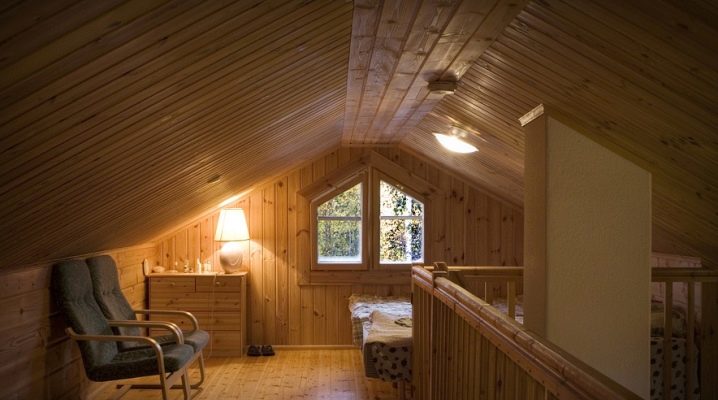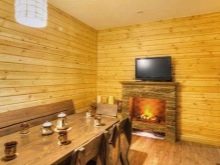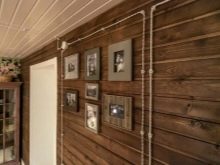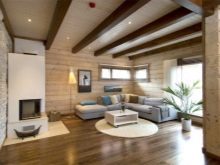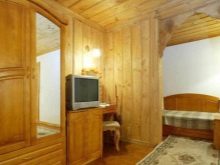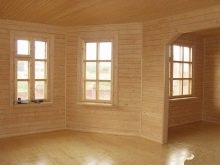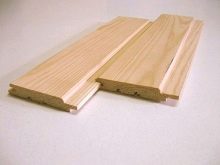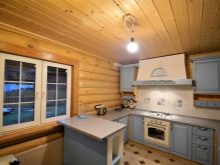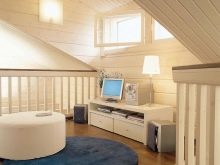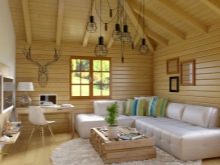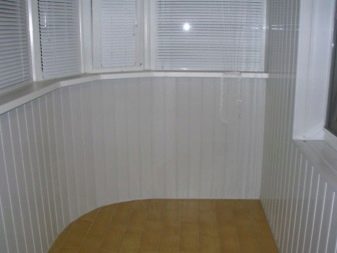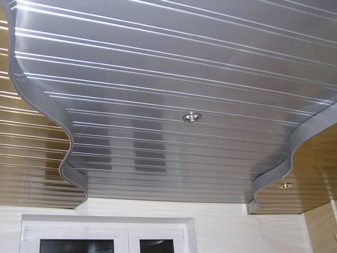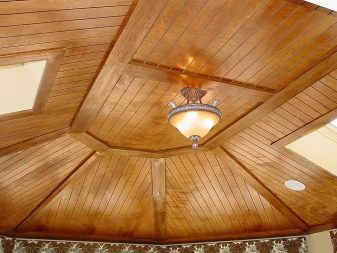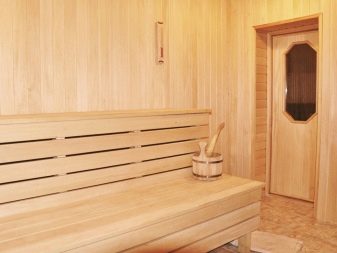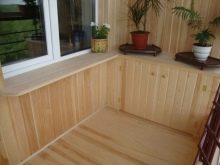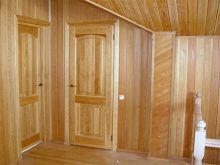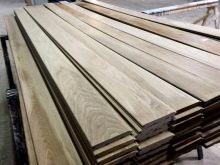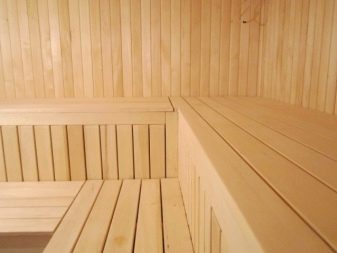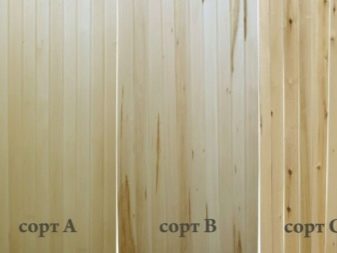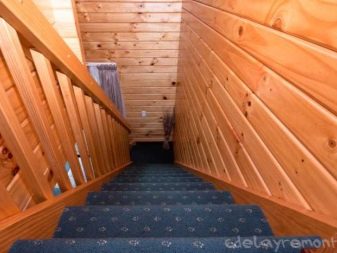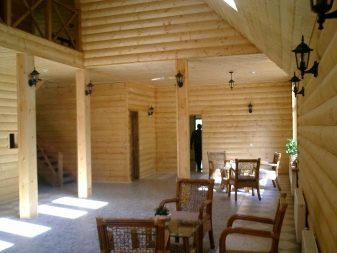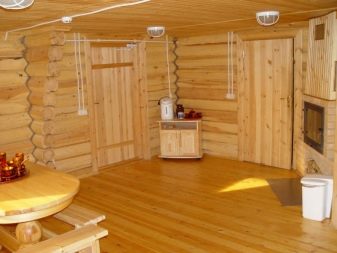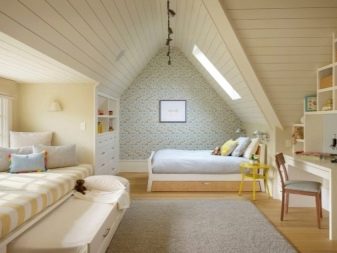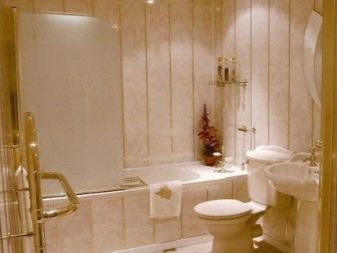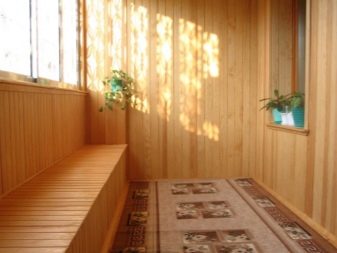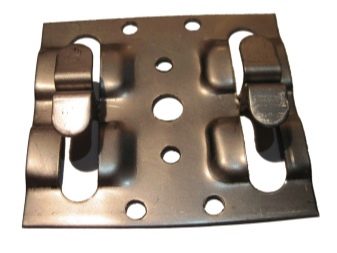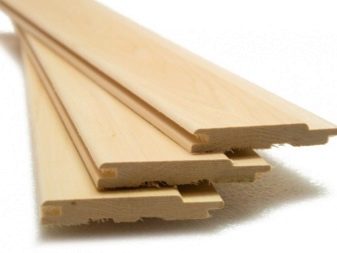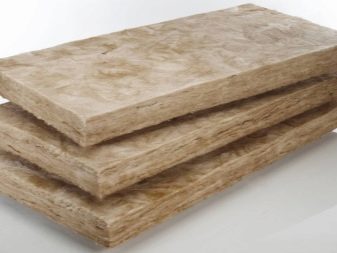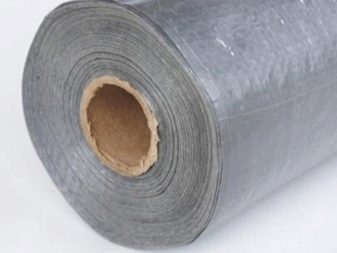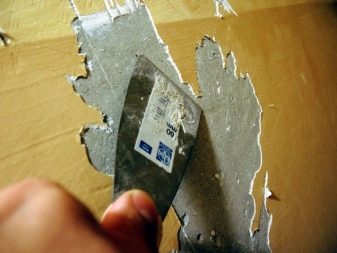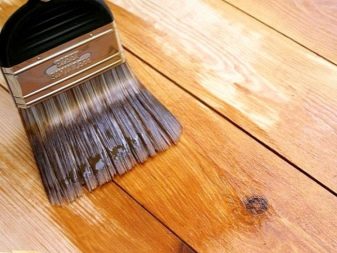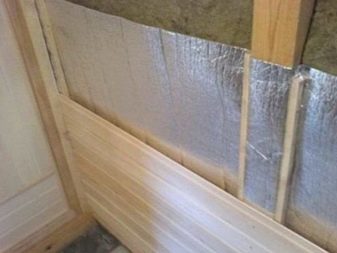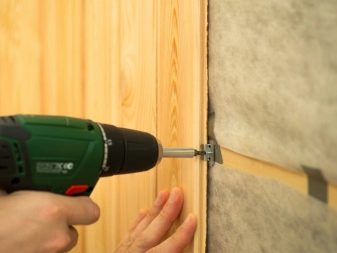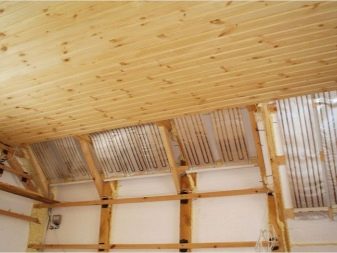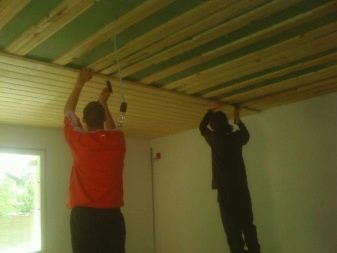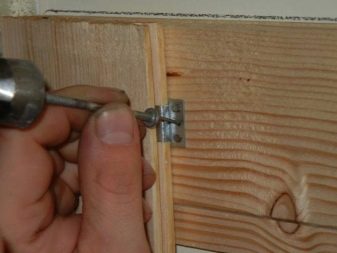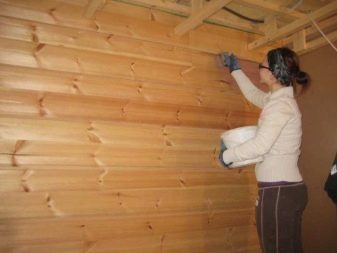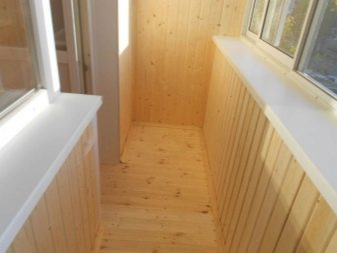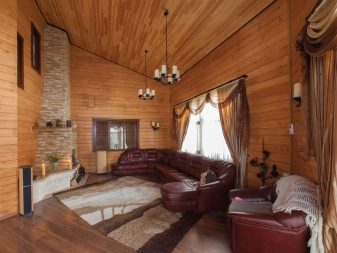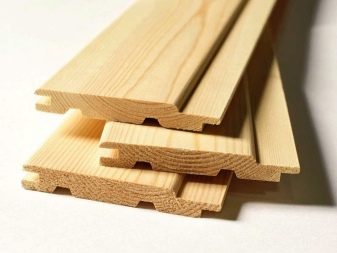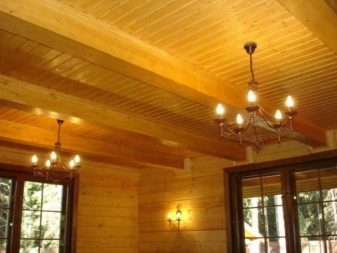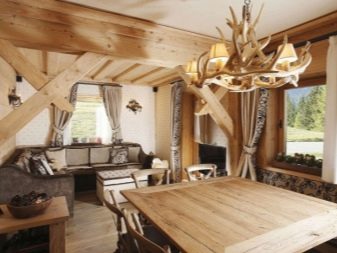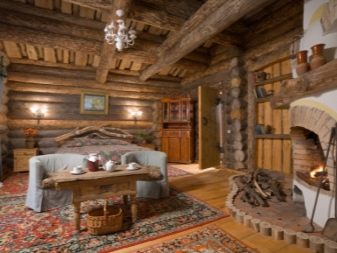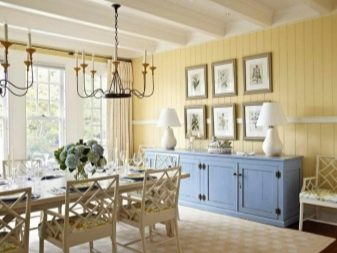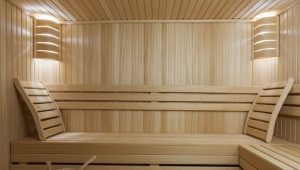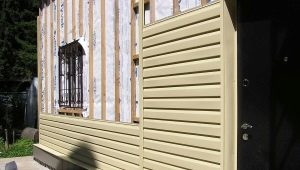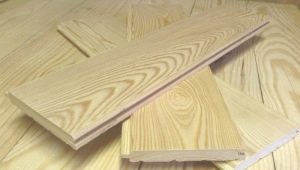Rules for choosing lining for interior decoration
The choice of materials for interior decoration of houses today is very large. Lining is still in high demand. It creates a special atmosphere of suburban housing and looks very beautiful. To please the result of interior decorating, you need to be able to choose the most suitable lining option.
Special features
Speaking of clapboard, most often refer to edged boards made of natural wood, although today this concept refers to some decorative materials of artificial origin.
Regular wooden wall paneling has a number of features that are important for interior decoration from the inside:
- environmental friendliness;
- resistance to temperature extremes;
- beautiful appearance;
- excellent noise insulation and thermal insulation properties.
With all the advantages of this material should not be discounted its fire risk. In addition, compared with modern - plastic - counterparts, "real lining" is more expensive. At the same time, strength and durability successfully compensate for the shortcomings of wooden boards, including those used for interior decoration.
On the market today, a large selection of such materials, differing not only in color but also in shape. This opens up great opportunities in the creation of various options for the design of rooms in the house.
Kinds
For today it is possible to allocate the following materials of which lining is made:
- tree;
- plastic;
- metal.
Plastic panels can be of various colors and sizes.They are light, they are easy to wash because of the laminated surface, it is convenient to use in rooms with high humidity. If it is properly handled with such material, it will serve for a long time and maintain a pleasant appearance.
Metal lining is also sometimes used for finishing inside the house. It is resistant to moisture, has a variety of textures, for example, it is made under stone and wood.
As for the traditional wooden lining, its features largely depend on the type of wood from which it is made.
- Cedar. The product of such a tree has a high density and resinous. Being in a room decorated with this wood is good for health, as its aroma has a calming effect on the nervous system. And also cedar is a natural antiseptic. In addition, his smell can not tolerate mosquitoes. The appearance of cedar lining is very attractive. One problem - all this mass of advantages is expensive, and therefore finishing material made of cedar will allow far from everyone to use it.
- Linden. This wood has a pleasant smell and uniform color. It is often used in the finishing of baths, since there is no resin in this tree. Lipa does not belong to the category of resistant to rotting, so the lining of it must be treated with special impregnations.
- Pine. Affordable. With beautiful color and characteristic wood stains, giving the finish of her attractive "naturalness". Pine is resistant to decay, but it is tarry. This should be considered when taking up the decoration of the internal space of the house.
- Larch. It is very resistant to damp, almost does not rot, but is very expensive.For internal work to apply it is not always advisable.
- Oak. Elite wood with the highest indicators, from the point of view of operation, and excellent external qualities. But the price of such a wall panel "rolls over." Such expenses are justified if there is a desire once to decorate the walls and never to return to this issue.
Of great importance in terms of use is the class of lining - "Extra", "A", "B", "C".
Best of all "Extra". This is the most durable and high-quality board with the greatest thickness and density. Class A and B lining are also very durable materials, but not to the same extent as Extra, although they are suitable for finishing in any room. Cheaper lining class "C". Despite the fact that according to its characteristics it is inferior to the board of higher classes, the demand for it is due to the low price. It should be borne in mind that this material has more pronounced traces of the branches that once protruded from the trunk of a living tree.
Features of fastening between the boards of a particular class may differ. What types are suitable for finishing a concrete, brick or wooden house inside, everyone decides for himself.
When choosing lining need to focus on its profile.It can have not only a flat surface, but also resemble a bar or log. If instead of the wallpaper horizontally laid log wall (block house), it can create the illusion of being in a wooden building created in the traditional Russian way.
Modern lining allows to embody various options for decorative finishes.
Scope of application
Lining made of natural wood is very organic to create a "natural design" inside the country house or just a country house. In the rooms, decorated with such material, an atmosphere of relaxation is created, to which the citizens so aspire, leaving for private ownership. In the bedroom with natural clapboard you can sleep well. It is no coincidence that this material is often chosen for the finishing of the second or attic floor, where rooms for relaxing rest are most often located.
Lining is used to design the slopes of doors and windows. And with its help you can finish not only the doorway itself, but also the door leaf.
This material is suitable not only for giving, but also for a city apartment, for example, for a corridor, a hallway or a balcony.
In the bathroom and the toilet most often use plastic lining.Due to the huge range of colors of this material on the market, you can choose the option that is suitable for any design idea for decorating the bathroom.
How to sheathe?
To sheathe clapboard rooms at home with your own hands, first you need to prepare the necessary materials:
- clamps;
- clapboard;
- slats made of wood (thickness 2 mm).
If the types of work are not limited to decorative trimming, and in addition, we plan to conduct warming from the inside, you need to stock up on:
- insulation;
- vapor barrier film;
- bar to build the frame.
In a house with concrete or brick walls, it is necessary first to free all walls from objects that interfere with work, remove old tiles and plaster, which have peeled off.
In a wooden house will require treatment of surfaces under the paneling antiseptic. The gap needs to be plugged with tow or some other insulation.
For the device of internal warming it is necessary to make a gap between the wall and the future decorative layer of the board. This is solved by installing rails that are attached to the wall every half meter (usually horizontally), including near the radiator.
After that, a vapor barrier is pulled to the surface. The layers of the film at the same time should overlap each other at least ten centimeters. The intersections of the layers should be secured with tape.
After that, with the help of metal corners are fixed rack frame. To begin with, bars are set at the edges from the corners so that the distance from the wall is the same. On the strained threads are exhibited all the other bars. The gap between them should be a couple of centimeters less than the width of the insulation mats. It is placed in the space between the racks.
This is followed by the installation of a vapor barrier layer, and then a slatted counter lath is made. It is mounted perpendicular to the location of the wall paneling.
It should be noted that for normal operation of the ventilation, small holes should be provided at the bottom and top. They are closed with mineral wool or tightened with a mesh.
When insulation is not required, to create a frame layer, you can simply install the slats, which will be located across the wall paneling.
On the ceiling frame under the wall paneling is mounted in the same way.
To install the wall panel on the wall, the boards are cut according to their height (for vertical placement).The trim starts at the corner. The board is set at the level and attached to the crate with screws. (You need to pre-drill a hole in it so that it does not crack). In the grooves, the clapboard is fixed to the crate clamps - in a hidden way. Klyammery screwed to the grid with screws or nailed with small nails.
Between the boards are fastened to the castle. This is how the entire surface of the wall is finished. The extreme board will have to be cut off from the side of the groove so that it will fit into the remaining space and fasten with screws.
When all the walls are sheathed, decorative corners of wood are installed in the corners. Fix them with carnations without caps. In addition, it is necessary to trim the slopes. Along the perimeter of the openings they fix the slats and fix the clapboard to them just like on the walls.
Similarly sheathed ceiling. The joints between it and the walls are closed with corners or wooden ceiling plinth.
When all the work is completed, it remains to cover the surface, lined with clapboard, special impregnation or varnish. This will give them an elegant glossy shade and protect the tree itself from rotting.
How to fix the wall paneling, see the next video.
Tips and tricks
Thinking about the interior decoration of the house clapboard, you should choose the size of the board itself. A lined balcony or room will look neat and impressive only if the correct length of the product is chosen. In addition, we should not forget that the improper length of the lining will lead to an increase in waste of construction material during plating.
How wide the wall paneling should be depends on the design concept and the parameters of the room itself. It should take into account the physical features of the board. The wider it is, the greater the likelihood that it will lead. And practice shows that narrower products easier to install.
Sometimes in the same room used boards of different widths. If you alternate them in a certain order, you can achieve an interesting external effect.
Depending on the conditions of use, you need to select the thickness of the lining. For plating inside the house is better to use products no thicker than sixteen millimeters.
Beautiful examples in the interior
The room, decorated with clapboard, looks very elegant and cozy, especially in the electric light of chandeliers. Open beams on the ceiling give it a volume and make the room not dull.Darker window frames give the necessary contrast, emphasizing the geometry of the room.
Fans of the Scandinavian style in the interior can safely take on board the paneling. In some places it looks deliberately rude, suggesting thoughts about the remoteness of a house from civilization. The combination with wooden furniture and a chandelier in the form of deer horns allows you to achieve harmony in the overall perception of space.
The house, made in the Russian style, can not do without finishing clapboard type block house. Combining it with a brick stove or fireplace, coarse dark ceiling beams and warm carpets creates a magical atmosphere of a Russian fairy tale, into which you sometimes want to get away from the city rush.
Natural shades of wooden wall paneling can emphasize the airiness and comfort of the interior in Provence style. The combination of light walls with openwork wooden furniture, chandeliers with a lot of "candles" adds lightness and cute simplicity to the interior.
